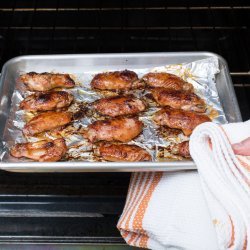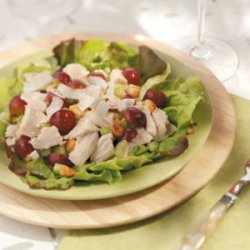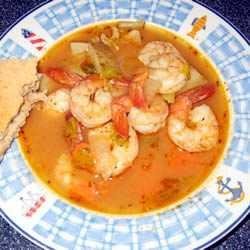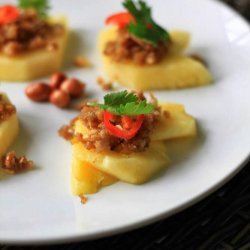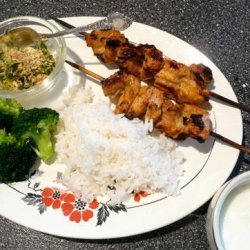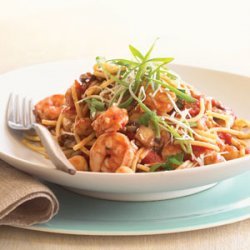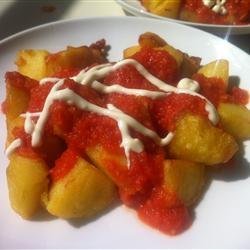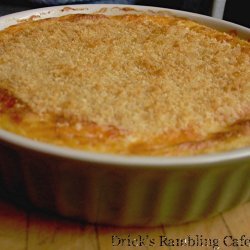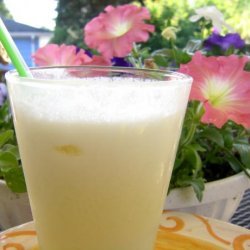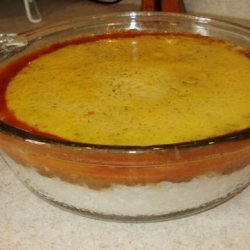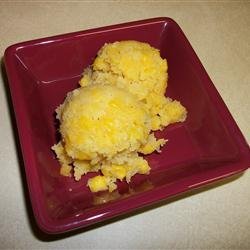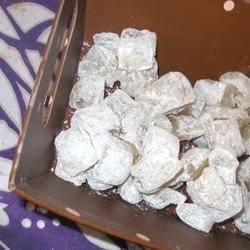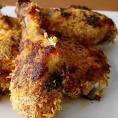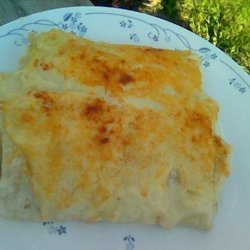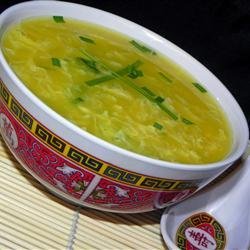Ingredients:
- 1/2 cup chu-chi chile paste, recipe follows
- 6 to 7 fresh red bird chiles or serrano chiles, 1/2 seeded, 1/2 not, and slivered
- 1 tbsp minced cilantro roots and stems
- 1/2 tsp thai white peppercorns, dry roasted and ground
- 1 stalk lemongrass, green parts and hard outer layers removed, minced
- 1 tsp grated kaffir lime zest or 1 tbsp grated regular lime zest
- 1 tsp fermented shrimp paste or 1 tbsp red miso
Directions:
- Massage the shrimp with a few pinches of sea salt and place in a colander in the sink to drain for 10 minutes. Rinse with cool water and dry thoroughly with paper towels.
- In a 12-inch skillet, heat the oil over high heat for 2 minutes to 325 degrees. (You can also test for readiness by dipping the tip of a wooden spoon into the oil; if bubbles form around it, the oil is ready for frying.) Deep-fry the shrimp until golden, 1 to 2 minutes. Remove with a slotted spoon and drain on a tray lined with paper towels. Cover lightly with more paper towels and set aside.
- In a 12-inch skillet, mix the 2 cups coconut cream with the chile paste and set over high heat. Cook, stirring to prevent the paste from burning, until the mixture begins to bubble, about 2 minutes. Lower the heat to medium-high and continue to cook, stirring occasionally, until the mixture thickens and the oil separates, releasing tiny bubbles the color of the chile paste, about 7 minutes. Add the fried shrimp, stirring to coat well, increase the heat to high, and season with the fish sauce and palm sugar. Cook, stirring well, for 1 to 2 minutes, then transfer to a serving platter. Garnish with the fresh chile slivers, mint leaf strands, and kaffir lime leaf strands.
- Using a mortar and pestle, pound the sea salt and garlic into a paste. One at a time, add the cilantro roots and stems, chiles, dried shrimp, if desired, the peppercorns, caraway seeds, galangal, lemongrass, lime zest, and shallots in sequence, adding each new ingredient only after the previous one is pureed and incorporated into the paste. Add the grated coconut and mix well, then add the fermented shrimp paste and mix well. The chile paste can be stored in the refrigerator for at least 1 month.
- Yield: about 3/4 cup
- Fresh Unsweetened Coconut Cream and Milk: Fresh unsweetened coconut cream and milk are called for in many of these recipes. After peeling the dark skins off the chunks of white meat, cut the meat into 1 to 2-inch chunks and place them in a heavy-duty food processor fitted with the steel blade. (If the coconut meat has been frozen, thaw it completely before slicing and grinding.) Grind for 30 to 60 seconds. Pause to scrape down the sides of the processor bowl; then pulse and blend until the meat turn to pulp. Add 1 cup warm water and process for 30 seconds. Transfer the coconut meat and liquid to a large mixing bowl, preferably one with a spout for pouring. Milk the coconut - that is, massage and squeeze the meat at least 89 times. This is a Thai ritual believed to produce a rich and creamy coconut milk. It works!
- Place a fine-mesh strainer, potato ricer, or bouillon strainer over another large mixing bowl. Pour the coconut cream and meat into the strainer, then press firmly to extract the liquid from the pulp. Refrigerate the liquid for at least 1 hour. The thick cream will coagulate on top, leaving the whey, or milk, in the bottom of the bowl. Skim off the thick cream into a resealable plastic bag or plastic container and refrigerate or freeze.
- Meanwhile, put the coconut pulp back into the first mixing bowl. Pour 3 cups of warm water over the pulp, and massage and squeeze the coconut meat another 89 times. Strain the liquid into another bowl, as before, and refrigerate the liquid for at least 1 hour, giving the thick cream time to rise to the top.
- Skim off the cream and combine with the thick cream extracted from the first milking. Pour the thin whey into a separate glass or plastic container and refrigerate until ready to use.
- Cooks Note: More cream that can be used as cooking oil can be extracted from the thin whey after the second milking. Boil the milk gently in a large saucepan for 5 to 7 minutes. When the cream rises to the surface, skim it off and use as cooking oil to stir-fry chile or spice pastes. Then thin milk can be used for a broth to cook and tenderize meat.
Nutrition Facts
| Amount Per 1 Serving | |||
| Calories | 1401.63 Kcal (5868 kJ) | ||
| Calories from fat | 998.53 Kcal | ||
| % Daily Value* | |||
| Total Fat | 110.95g | 171% | |
|---|---|---|---|
| Cholesterol | 67.19mg | 22% | |
| Sodium | 2260.96mg | 94% | |
| Potassium | 353.02mg | 8% | |
| Total Carbs | 97.61g | 33% | |
| Sugars | 58.49g | 234% | |
| Dietary Fiber | 5.2g | 21% | |
| Protein | 11.9g | 24% | |
| Vitamin C | 4mg | 7% | |
| Iron | 1.7mg | 9% | |
| Calcium | 60.7mg | 6% | |
| Amount Per 100 g | |||
| Calories | 146.85 Kcal (615 kJ) | ||
| Calories from fat | 104.62 Kcal | ||
| % Daily Value* | |||
| Total Fat | 11.62g | 171% | |
|---|---|---|---|
| Cholesterol | 7.04mg | 22% | |
| Sodium | 236.88mg | 94% | |
| Potassium | 36.99mg | 8% | |
| Total Carbs | 10.23g | 33% | |
| Sugars | 6.13g | 234% | |
| Dietary Fiber | 0.54g | 21% | |
| Protein | 1.25g | 24% | |
| Vitamin C | 0.4mg | 7% | |
| Iron | 0.2mg | 9% | |
| Calcium | 6.4mg | 6% | |
* Percent Daily Values are based on a 2000 calorie diet. Your daily values may be higher or lower depending on your calorie needs.
Find out how many calories should you eat.
Get Your Recipe of Health!
Follow RecipeOfHealth on Facebook!


